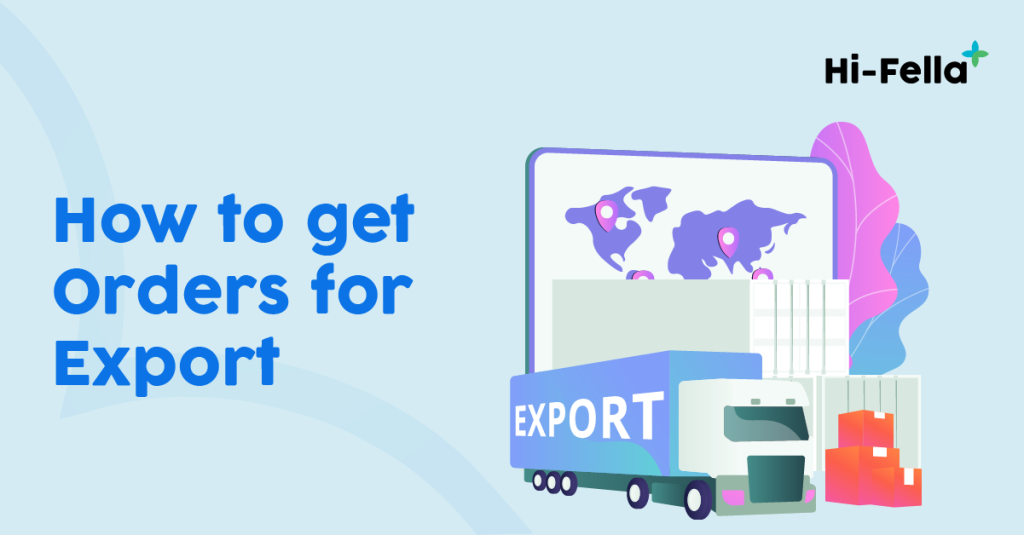Table of Contents
Entering the global marketplace and obtaining export orders can be a daunting task, especially if you’re new to the world of international trade. However, with the right strategies and a proactive approach, you can attract clients from around the world. In this guide, we’ll steer you through the process of getting those coveted export orders, helping you build a strong foundation for your global business success. These actionable tips will set you on the path to securing international sales and growing your export venture. Learn proven techniques to attract and secure international orders for your products.
Networking and Building Relationship
The first thing you may want to try on how to get orders for export is networking and building relationships for international business connections. In this globalized era, you have so many different options regarding networking and building relationship strategies. Joining international business organizations, attending conventions and trade shows in other countries, leveraging social media platforms such as LinkedIn to connect with professionals in your industry worldwide could be a great start to build a network.
Not only that, you should also be aware of the culture when building relationships for international business connections. Learning a new language to communicate better with people around the world, understand their cultural nuances and business etiquette of your target market, and show respect for local customs, languages, and traditions to build trust and rapport could be your best start. You can also seek help from the locals. Seek guidance from local business associations, chambers of commerce, or industry experts in your target market. They can provide valuable insights and introductions.
Negotiations and Setting up a Contract
When you want to master how to get orders for export, you need to prepare for business negotiations and setting up a contract. Research the legal and regulatory requirements of both your home country and the target market. Conduct due diligence on potential partners. You also need to know what’s in your contract. Ensure your export contracts specify product description, quantity, quality, certificates and other details, pricing including currency, delivery schedules, quality standards, payment method and time of payment, documents needed such as commercial invoice, packing list, insurance, certificate of origin, certificate of inspection, customs documents, other documents, and dispute resolution mechanisms in clear and unambiguous language. Consider hiring legal counsel experienced in international trade to review and draft contracts, protecting your interests and ensuring compliance with international laws. Keep in mind to evaluate risks associated with international trade, including currency fluctuations and political instability. Consider export credit insurance and risk management strategies.
Government Export Promotion Agencies
You can try government export promotion programs and resources. You can try to contact government export promotion agencies, such as the U.S. Commercial Service or UK Trade & Investment, for guidance, market research, and export support programs. Explore government-backed export financing options like export credit agencies or loan guarantees to facilitate international sales. You can also utilize government programs that offer market entry grants, trade missions, and export training to help your business establish a foothold in foreign markets.
Attend International Trade Shows and Exhibitions
Moreover you can try to participate in international trade shows and exhibitions. Trade fair such as Febrava for cooling, air conditioning, ventilation, and heating technology in Sao Paulo, Brazil, Zukunft Personal Europe for Europe’s largest human resource exhibition in Cologne, Germany, or Swiss Medtech Expo for Medical Technology in Lucerne, Switzerland could be your start. Invest in an eye-catching booth design that reflects your brand and product/service quality. Provide informative materials and interactive demonstrations. Keep in mind to plan your participation well in advance. Develop a marketing strategy, set measurable goals, and arrange meetings with potential clients or partners ahead of the event. After the trade show, promptly follow up with leads and connections made during the event. Nurture relationships and convert prospects into customers through personalized communication.
Ready to up your export-import game? Discover the world of possibilities with Hi-Fella! This online platform that brings international buyers and suppliers together will help you to do an export-import activity. With only downloading the Hi-Fella app on the App Store or Play Store and signing up for an account, you can do your business with ease. Watch your international business thrive!








